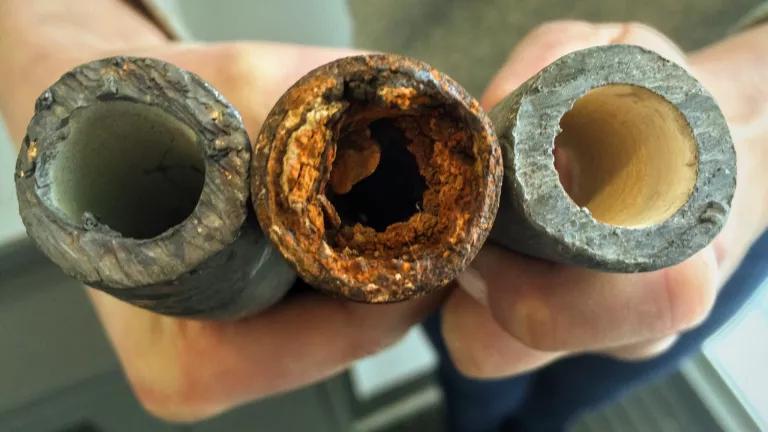
U.S. EPA Region 5
Despite the horrified national reaction to the ongoing Flint Water Crisis, lead contamination of drinking water remains an issue in communities across the nation. We reported that in 2015, more than 18 million Americans got their water from systems with lead violations. And as we noted in that report, this may significantly understate the extent of our lead in tap water problem, given rigged testing and lax enforcement of federal rules. Three years later and not much has changed, despite increased awareness and concern over the problem.
But change could be on the horizon.
Michigan’s new Lead and Copper rule signals significant improvement to drinking water protections that will eventually result in removal of the lead service lines—the small pipes that feed drinking water to homes from the larger water mains under the street, and which have been at the heart of many contamination issues, including in Flint. Getting lead service lines out of the ground is the most effective way to reduce the potential for dangerous water contamination by lead. That’s why we sued to force that outcome in Flint. And that is why, despite substantial warts and loopholes, the new rule represents a significant step forward, far better than any other state’s actions so far. Our colleague Cyndi Roper has been advocating tirelessly for this rule change and has written up a deeper evaluation of the state’s actions (both the good and bad elements of the new policy).
While we have some concerns, Michigan has raised the bar. Neighboring states, many of which have their own lead issues, need to look closely at what is happening in the Great Lakes State. They need to update their own safe drinking water protections to keep up.
It is also imperative that US Environmental Protection Agency Administrator Pruitt look closely at Michigan’s action. He has said that the nation needs to “declare war on lead,” noting that the problem should be eradicated in the next 10 years. But nothing has been done. No plans have been drafted. No new money allocated.
It’s fair to wonder how serious the Trump Administration is about the problem.
While we’re deeply skeptical that Pruitt would actually improve things, there’s a lot EPA could do, starting with a much-needed revamp of the federal Lead and Copper Rule. That’s the weak 27 year-old public health standard for lead in tap water that is in dire need of a major upgrade.
Michigan’s new lead and copper rule gives the federal EPA a glimpse of where to start. While the Michigan rules are imperfect and some shortcomings in it need to be addressed, every American deserves at a minimum the more protective standards that come with the state’s effort. EPA should follow suit and ensure we start to pull out the lead pipes nationally with a stronger rule.
The agency should get the lead out—literally—because all talk and no action is unacceptable when we are talking about neurotoxins that are poisoning our kids.




